
Cirkit Designer
Your all-in-one circuit design IDE
Home /
Component Documentation
How to Use GPS: Examples, Pinouts, and Specs
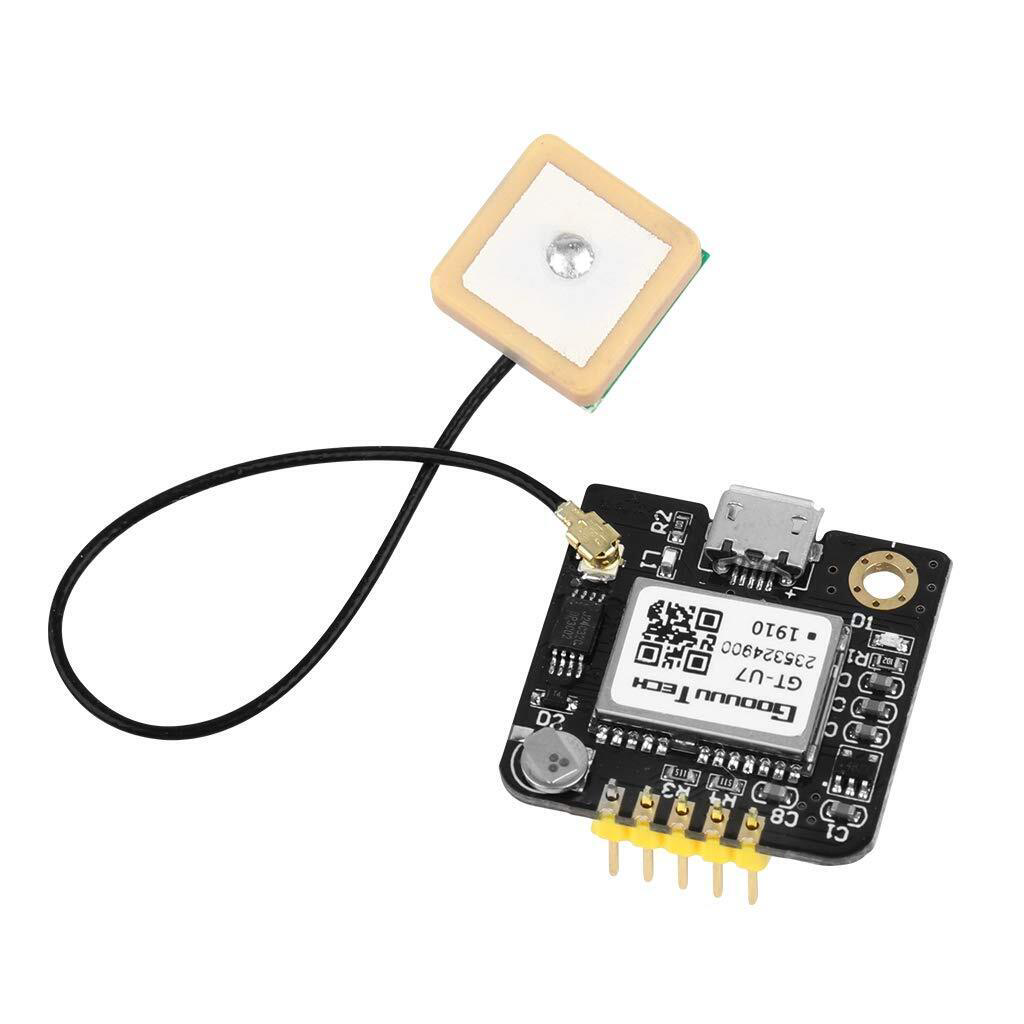
 Design with GPS in Cirkit Designer
Design with GPS in Cirkit DesignerIntroduction
The Beffkkip NEO-6M GPS module is a satellite-based navigation system that provides accurate location and time information in all weather conditions, anywhere on or near the Earth. This module is widely used in various applications such as vehicle tracking, personal navigation devices, and geographic information systems (GIS).
Explore Projects Built with GPS
ESP32-Based GPS Tracker with OLED Display and Telegram Integration
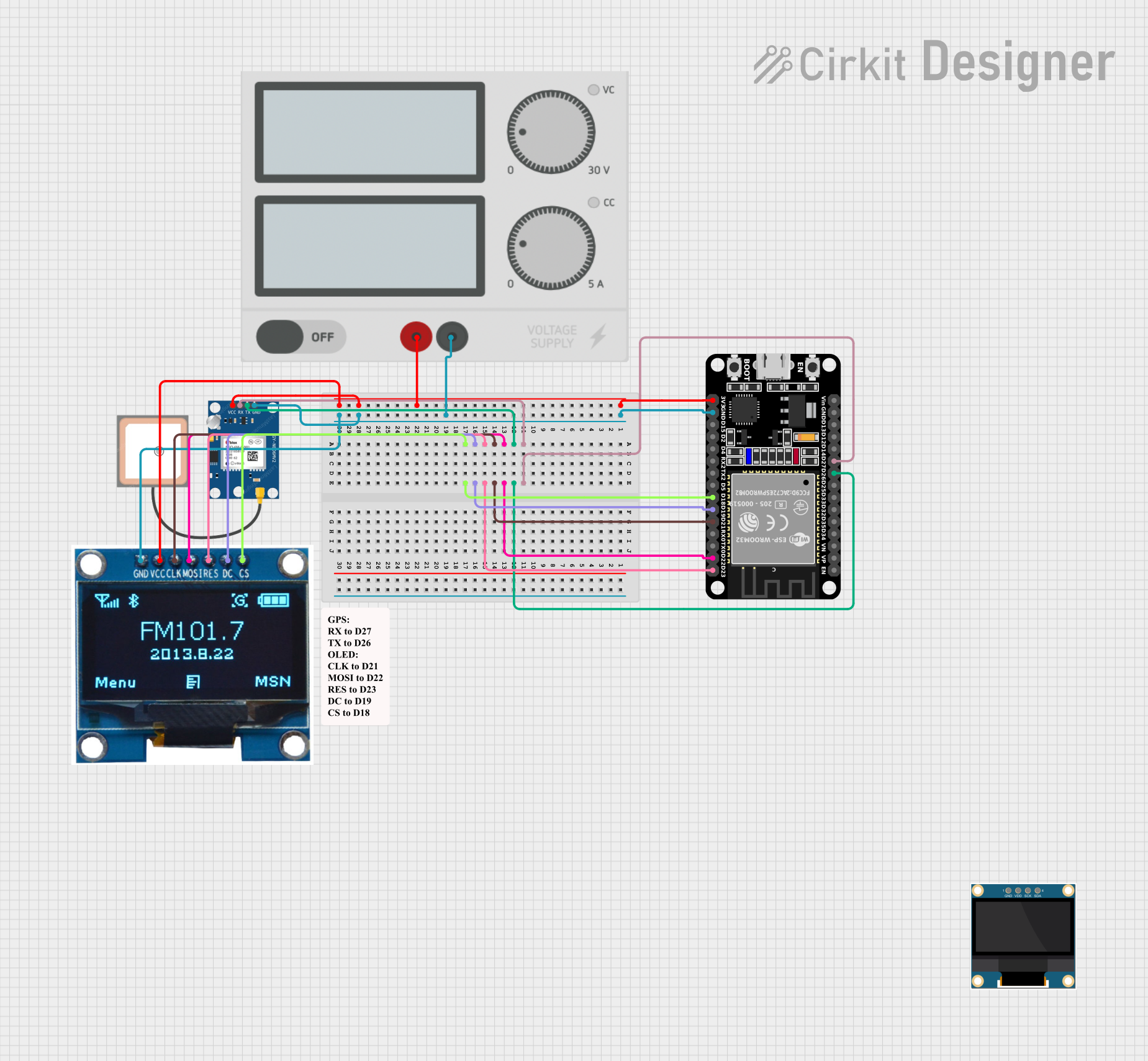
This circuit is a GPS-based tracking system that uses an ESP32 microcontroller to receive GPS data from a NEO 6M module and display the coordinates on a 1.3" OLED screen. It also features WiFi connectivity to send location updates to a remote server, potentially for applications such as asset tracking or navigation assistance.
 Open Project in Cirkit Designer
Open Project in Cirkit DesignerESP32-Based GPS Tracker with OLED Display and Firebase Integration
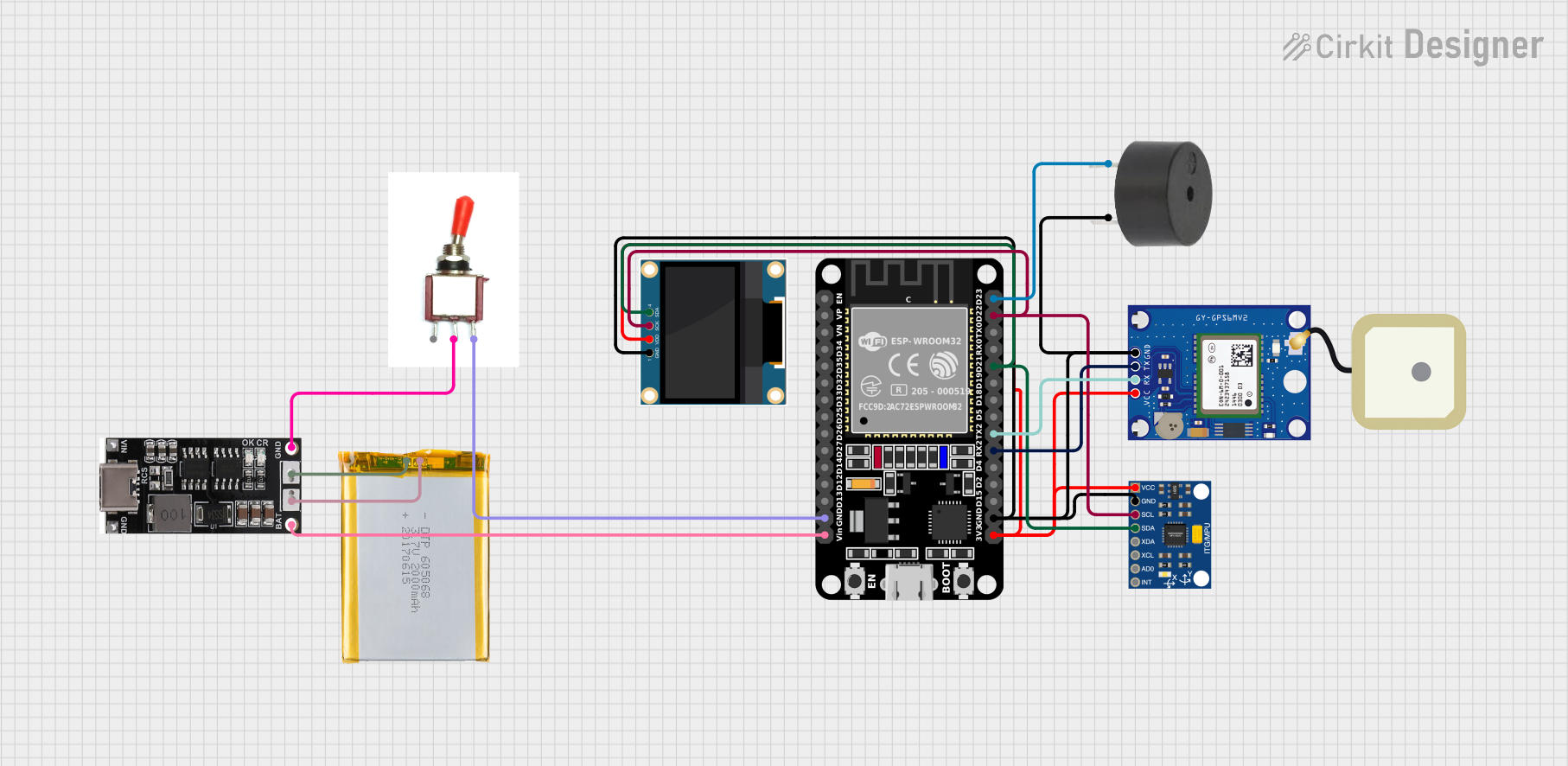
This circuit is a GPS tracking system that uses an ESP32 microcontroller to read location data from a NEO-6M GPS module and display information on a 0.96" OLED screen. The system is powered by a 2000mAh battery with a lithium-ion charger, and it uploads the GPS data to Firebase via WiFi. Additional components include an MPU6050 accelerometer/gyroscope for motion sensing and a buzzer for alerts.
 Open Project in Cirkit Designer
Open Project in Cirkit DesignerArduino Nano GPS Tracker with GSM and OLED Display
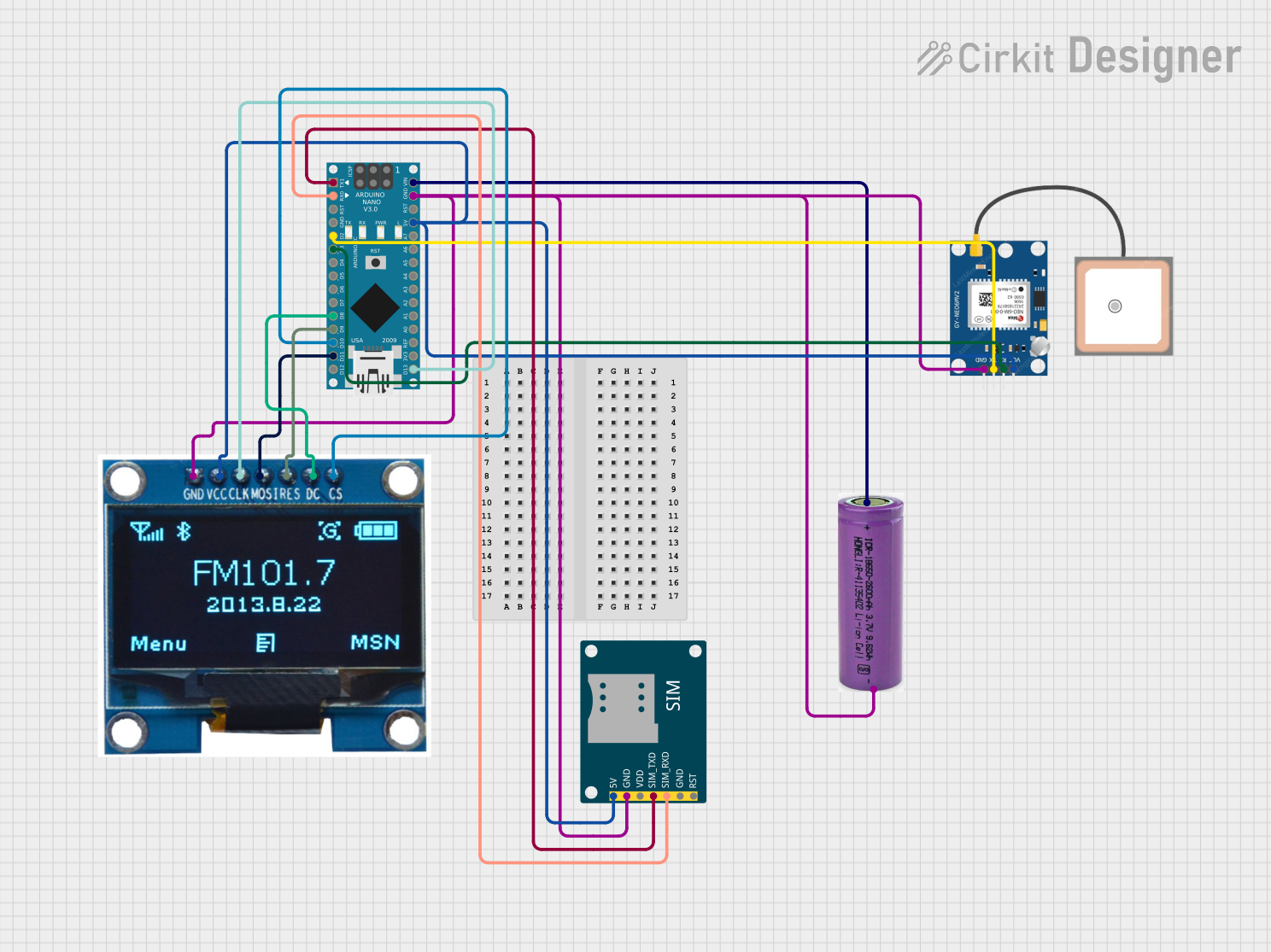
This circuit is a GPS tracking system that uses an Arduino Nano to interface with a SIM800L GSM module, a GPS NEO 6M module, and a 1.3-inch OLED display. The Arduino collects GPS data, displays it on the OLED screen, and sends the coordinates via SMS using the GSM module.
 Open Project in Cirkit Designer
Open Project in Cirkit DesignerArduino UNO-Based GPS and GSM-Enabled Vibration Sensor System with Motor Control
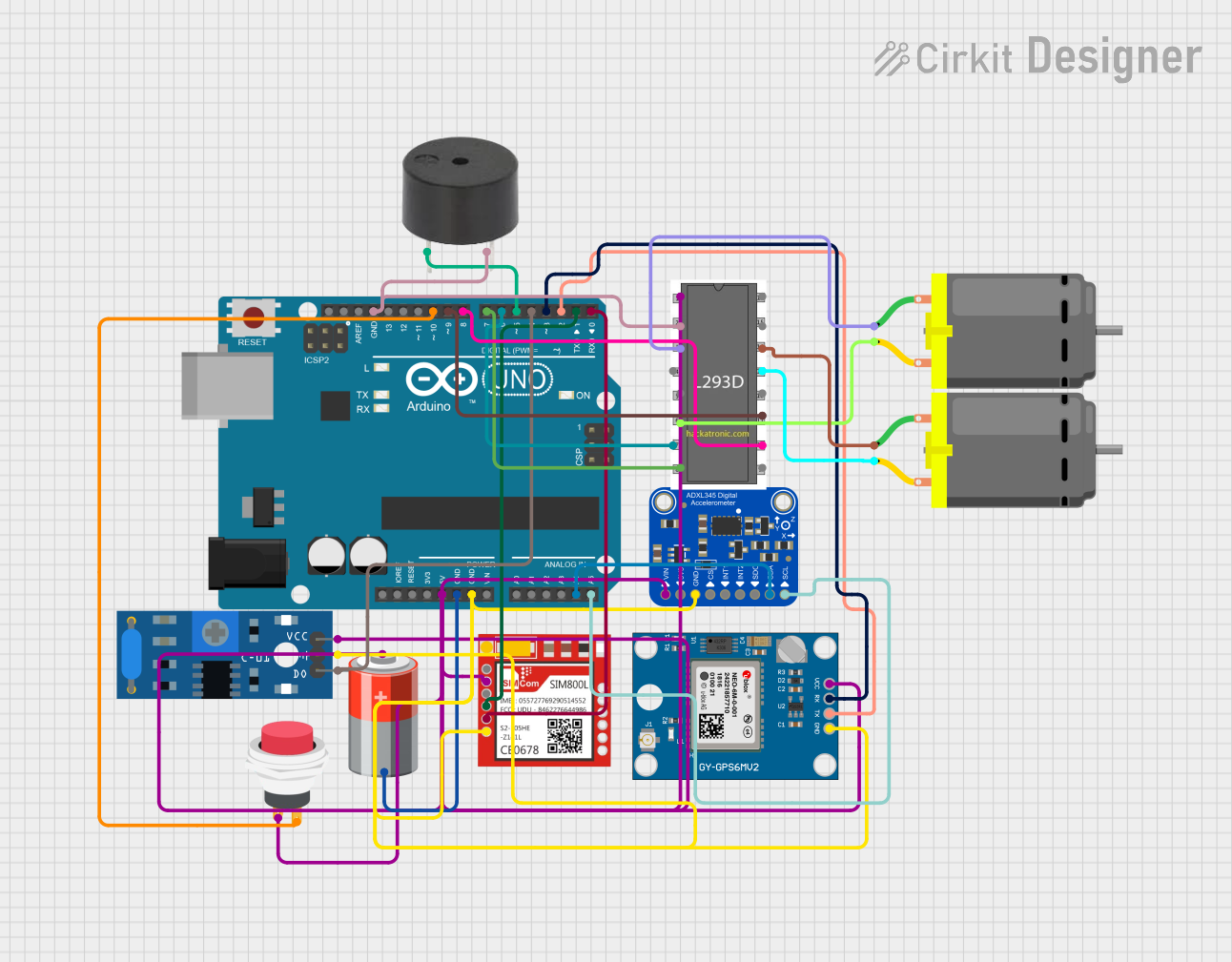
This circuit is a GPS-based tracking system with vibration detection and motor control capabilities. It uses an Arduino UNO to interface with a Neo 6M GPS module for location data, a Sim800l module for GSM communication, an ADXL345 accelerometer for motion sensing, and an SW-420 vibration sensor to detect vibrations. The system also includes a motor driver to control two DC motors and a buzzer for alerts, all powered by a 5V battery.
 Open Project in Cirkit Designer
Open Project in Cirkit DesignerExplore Projects Built with GPS

ESP32-Based GPS Tracker with OLED Display and Telegram Integration
This circuit is a GPS-based tracking system that uses an ESP32 microcontroller to receive GPS data from a NEO 6M module and display the coordinates on a 1.3" OLED screen. It also features WiFi connectivity to send location updates to a remote server, potentially for applications such as asset tracking or navigation assistance.
 Open Project in Cirkit Designer
Open Project in Cirkit Designer
ESP32-Based GPS Tracker with OLED Display and Firebase Integration
This circuit is a GPS tracking system that uses an ESP32 microcontroller to read location data from a NEO-6M GPS module and display information on a 0.96" OLED screen. The system is powered by a 2000mAh battery with a lithium-ion charger, and it uploads the GPS data to Firebase via WiFi. Additional components include an MPU6050 accelerometer/gyroscope for motion sensing and a buzzer for alerts.
 Open Project in Cirkit Designer
Open Project in Cirkit Designer
Arduino Nano GPS Tracker with GSM and OLED Display
This circuit is a GPS tracking system that uses an Arduino Nano to interface with a SIM800L GSM module, a GPS NEO 6M module, and a 1.3-inch OLED display. The Arduino collects GPS data, displays it on the OLED screen, and sends the coordinates via SMS using the GSM module.
 Open Project in Cirkit Designer
Open Project in Cirkit Designer
Arduino UNO-Based GPS and GSM-Enabled Vibration Sensor System with Motor Control
This circuit is a GPS-based tracking system with vibration detection and motor control capabilities. It uses an Arduino UNO to interface with a Neo 6M GPS module for location data, a Sim800l module for GSM communication, an ADXL345 accelerometer for motion sensing, and an SW-420 vibration sensor to detect vibrations. The system also includes a motor driver to control two DC motors and a buzzer for alerts, all powered by a 5V battery.
 Open Project in Cirkit Designer
Open Project in Cirkit DesignerTechnical Specifications
Key Technical Details
| Parameter | Value |
|---|---|
| Operating Voltage | 2.7V - 3.6V |
| Power Consumption | 45mA (typical) |
| Position Accuracy | 2.5m CEP |
| Velocity Accuracy | 0.1 m/s |
| Time Accuracy | 30 ns |
| Update Rate | 1 Hz (default), up to 5 Hz |
| Sensitivity | -161 dBm |
| Cold Start Time | 27 seconds |
| Hot Start Time | 1 second |
| Communication | UART, TTL |
Pin Configuration and Descriptions
| Pin Number | Pin Name | Description |
|---|---|---|
| 1 | VCC | Power supply (3.3V) |
| 2 | GND | Ground |
| 3 | TX | Transmit data (UART) |
| 4 | RX | Receive data (UART) |
| 5 | PPS | Pulse per second (timing signal) |
| 6 | FIX | Fix status indicator (optional, not always used) |
Usage Instructions
How to Use the Component in a Circuit
- Power Supply: Connect the VCC pin to a 3.3V power supply and the GND pin to the ground.
- UART Communication: Connect the TX pin of the GPS module to the RX pin of your microcontroller (e.g., Arduino UNO) and the RX pin of the GPS module to the TX pin of your microcontroller.
- PPS Signal: Optionally, connect the PPS pin to an input pin on your microcontroller to use the timing signal for precise timekeeping.
Important Considerations and Best Practices
- Antenna Placement: Ensure the GPS antenna has a clear view of the sky for optimal satellite reception.
- Power Supply: Use a stable 3.3V power supply to avoid fluctuations that can affect performance.
- UART Baud Rate: The default baud rate is 9600 bps. Ensure your microcontroller is configured to match this rate.
- Cold and Hot Starts: Be aware of the cold and hot start times. A cold start takes longer as the module needs to acquire satellite data from scratch.
Example Code for Arduino UNO
#include <SoftwareSerial.h>
// Create a software serial port on pins 4 (RX) and 3 (TX)
SoftwareSerial gpsSerial(4, 3);
void setup() {
// Start the hardware serial port for debugging
Serial.begin(9600);
// Start the software serial port for GPS communication
gpsSerial.begin(9600);
}
void loop() {
// Check if data is available from the GPS module
if (gpsSerial.available()) {
// Read a byte from the GPS module
char c = gpsSerial.read();
// Print the byte to the hardware serial port
Serial.print(c);
}
}
Troubleshooting and FAQs
Common Issues Users Might Face
No GPS Fix: The module is not able to get a GPS fix.
- Solution: Ensure the antenna has a clear view of the sky and is properly connected. Check for any obstructions that might block satellite signals.
No Data Output: The module is not sending any data.
- Solution: Verify the power connections and ensure the module is powered on. Check the UART connections and ensure the baud rate is correctly set.
Inaccurate Position Data: The position data is not accurate.
- Solution: Ensure the module has a good satellite signal. Reposition the antenna if necessary. Allow the module some time to get a stable fix.
Solutions and Tips for Troubleshooting
- Check Connections: Ensure all connections are secure and correct.
- Power Supply: Use a stable power supply to avoid performance issues.
- Antenna Position: Place the antenna in an open area with a clear view of the sky.
- Baud Rate: Ensure the baud rate of the GPS module matches the microcontroller settings.
By following these guidelines and best practices, you can effectively integrate the Beffkkip NEO-6M GPS module into your projects and achieve reliable performance.